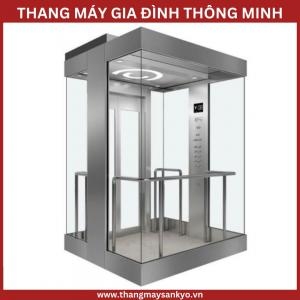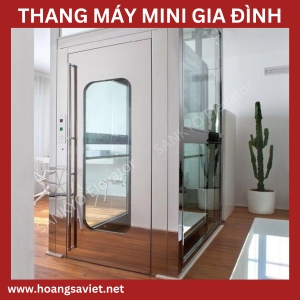The system is processing. Please wait a moment!
- Home Sankyo Elevator Products Home Elevator. New Price 2024!
Cable Traction Elevator
| Load: | Customize |
| Speed: | 1 meter/second |
| Number of Floors: | Customize |
| Material: | Aluminum Alloy + Glass |
| Classify: | Customize |
TABLE OF CONTENTS
What is a cable elevator?
Cable elevators , commonly known as home elevators, are a popular type of elevator with a separate machine room located at the highest point of the building. This machine room plays an important role in containing essential components such as electrical cabinets and traction machines, ensuring the elevator system operates stably and safely. The highlight of the cable elevator lies in the cable system, a key part responsible for lifting and lowering the cabin and counterweight. The cable system not only helps to distribute the load reasonably but also ensures smooth operation, minimizes vibration, and provides a safe and comfortable travel experience for users.
With high load-bearing capacity and reliable durability, cable-driven elevators become the ideal solution for households, especially in townhouses or villas. In addition to outstanding performance, this type of elevator is also highly appreciated for its flexibility in design, easily integrated with many different architectural styles, from modern to classic. Thanks to these outstanding advantages, cable-driven elevators not only meet the needs of movement but also contribute to enhancing the value of use and aesthetics of living spaces, becoming the top choice in current home elevator solutions.
.jpg)
Structure of family cable elevator
To better understand the structure and operating principles of thang máy gia đình Using cable technology, we need to be familiar with some important terms:
Elevator shaft : This is the space that holds the elevator, usually built according to the height of the building and extending from top to bottom. It provides space for the elevator cabin to move, and plays an important role in ensuring the safety and performance of the system.
SEE MORE ARTICLES
Machine room : Is a specially designed space at the top of the elevator shaft to contain control devices and traction machines. The machine room is not only the control center of the entire elevator system but also ensures that the components operate efficiently and stably.
Elevator Pit (PIT): This is the space at the end of the elevator shaft, usually dug deep into the ground. In the elevator pit, components such as shock absorbers and limit switch systems are installed to ensure the safety and performance of the elevator. The elevator pit also plays an important role in elevator maintenance and repair.
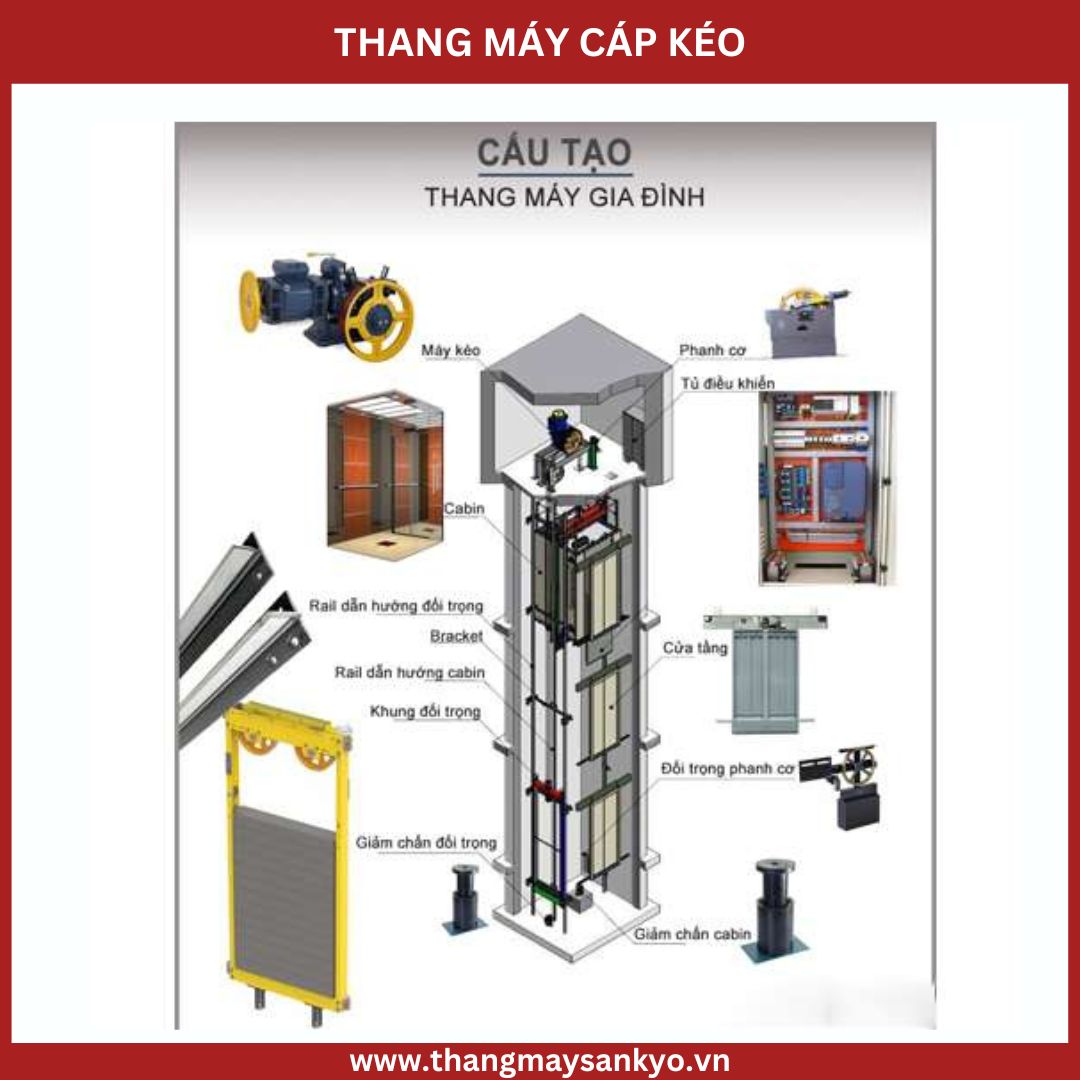
Although it is made up of many different components and equipment assemblies, Sankyo has classified elevator components and equipment into 10 groups to make it easier to understand and manage them.
Traction Motor: This part is usually located at the top of the elevator shaft or, in some cases, can be installed in the elevator pit. The main function of the traction motor is to generate the power needed to move the elevator car up and down. It activates the reducer, which in turn rotates the pulley to pull the car.
SEE MORE PRODUCTS:
Elevator control system: This is a vital component that contains electronic devices programmed to control the elevator's operation as required. This system ensures that the elevator operates safely and efficiently, regulating functions such as speed control and stopping at floors accurately.
Guide rails in elevators are installed along the elevator shaft to guide the cabin and counterweight to move in the correct direction during operation. The main function of the guide rails is to ensure that the counterweight and cabin always maintain a stable position in the elevator shaft and do not deviate or move laterally during movement. In addition, the guide rails must also have sufficient stiffness to withstand the weight of the cabin and counterweight, as well as the dynamic loads when the safety brake operates. This is especially important in emergency situations, such as when the cable breaks or the cabin moves down at a speed greater than the allowable value. The guide rails must ensure that the elevator operating system always operates safely and stably, protecting the lives and property of users.
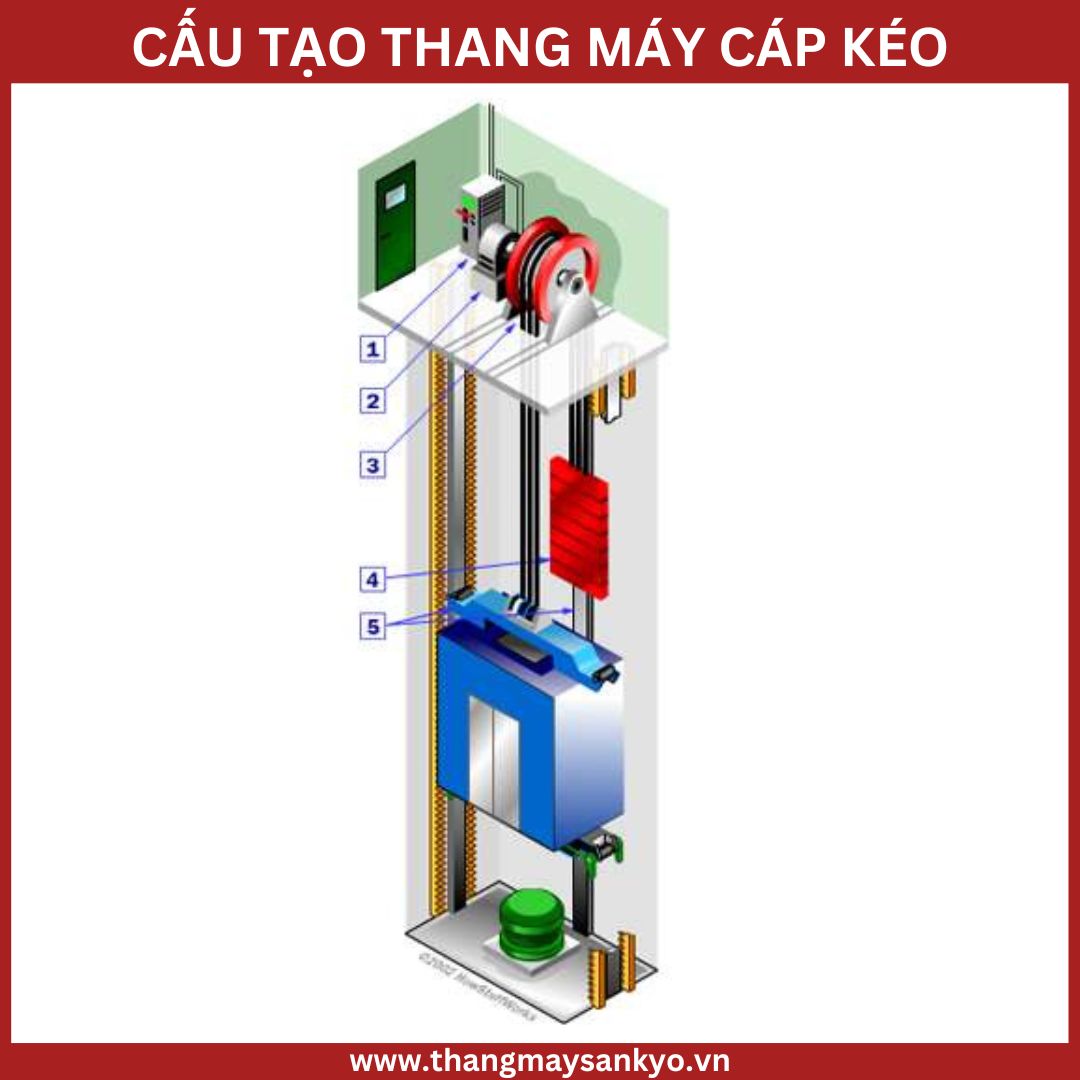
Speed limiter (Mechanical brake): This part plays an important role in regulating the speed of the elevator cabin. When the cabin moves at a speed exceeding the allowed level, the speed limiter will activate, clamping the cabin tightly to the guide rail, ensuring safety during operation.
Shock absorber: This part is designed to minimize impacts and vibrations to the elevator car. In case other safety protection systems fail, the shock absorber will reduce the shock to the car and system, ensuring the safety of passengers and property.
Cabin and landing doors : Cabin and landing doors are designed to open and close smoothly and gently. At the same time, they are also equipped with an anti-jamming system, ensuring safety when there is an obstacle during the opening or closing process. This helps to avoid unwanted situations and ensures absolute safety for elevator users.
Cabin : This is the main space of the elevator, where users can move safely and conveniently. The cabin provides a comfortable environment for passengers and allows them to control the elevator as they wish.
SEE MORE ARTICLES
Counterweight : As an important part of the elevator system, the counterweight is designed to create a pulling force that is opposite to the cabin. Thanks to the weight of the counterweight, along with the operation of the traction machine, the cabin can move easily and stably.
Floor door safety system : Integrated to ensure safety for the floor door area. This system automatically opens the door when it detects an obstacle in front of the door or when there is a risk of unsafety during operation.
Safety warning system: Includes devices such as telephones, overload warning systems, alarms and other mechanisms to provide information and warnings about the safety status of the elevator. This enables users and maintenance personnel to respond promptly to any problems that may arise.
SEE MORE PRODUCTS:
Operating principle of cable-pulled home elevator
Cable traction home elevator , domestically produced, operates on the principle of traction cable. A traction cable is connected to the counterweight via a pulley. This counterweight ensures weight balance, helping the elevator operate stably and reliably.
To ensure the normal operation of the cable elevator, the counterweight must be at least 40% greater than the weight of the cabin. This load level is necessary to ensure that the elevator will operate stably and comply with safety procedures. This balance not only keeps the system operating efficiently, but also ensures the energy conservation of the entire elevator.
SEE MORE ARTICLES
The traction elevator works on the principle of balance, similar to the use of a child's rocking chair. When a small force is applied to the elevator, it will be lifted up and conversely, when a suction force is applied, the elevator will be pulled down. This operating mechanism utilizes the lifting and pulling power of the cabin and counterweight to move the elevator up and down easily and efficiently. This reduces the power required for the traction machine and provides a safe and efficient method of moving in the traction elevator.
The harmonious combination of the load and the operating mechanism of the elevator creates a natural balance between the cabin and the counterweight, which is the decisive factor for the safety and performance of the system. When the elevator is operating, the traction machine consumes a small amount of force to maintain the balance between these two parts, making the movement smoother and more stable.
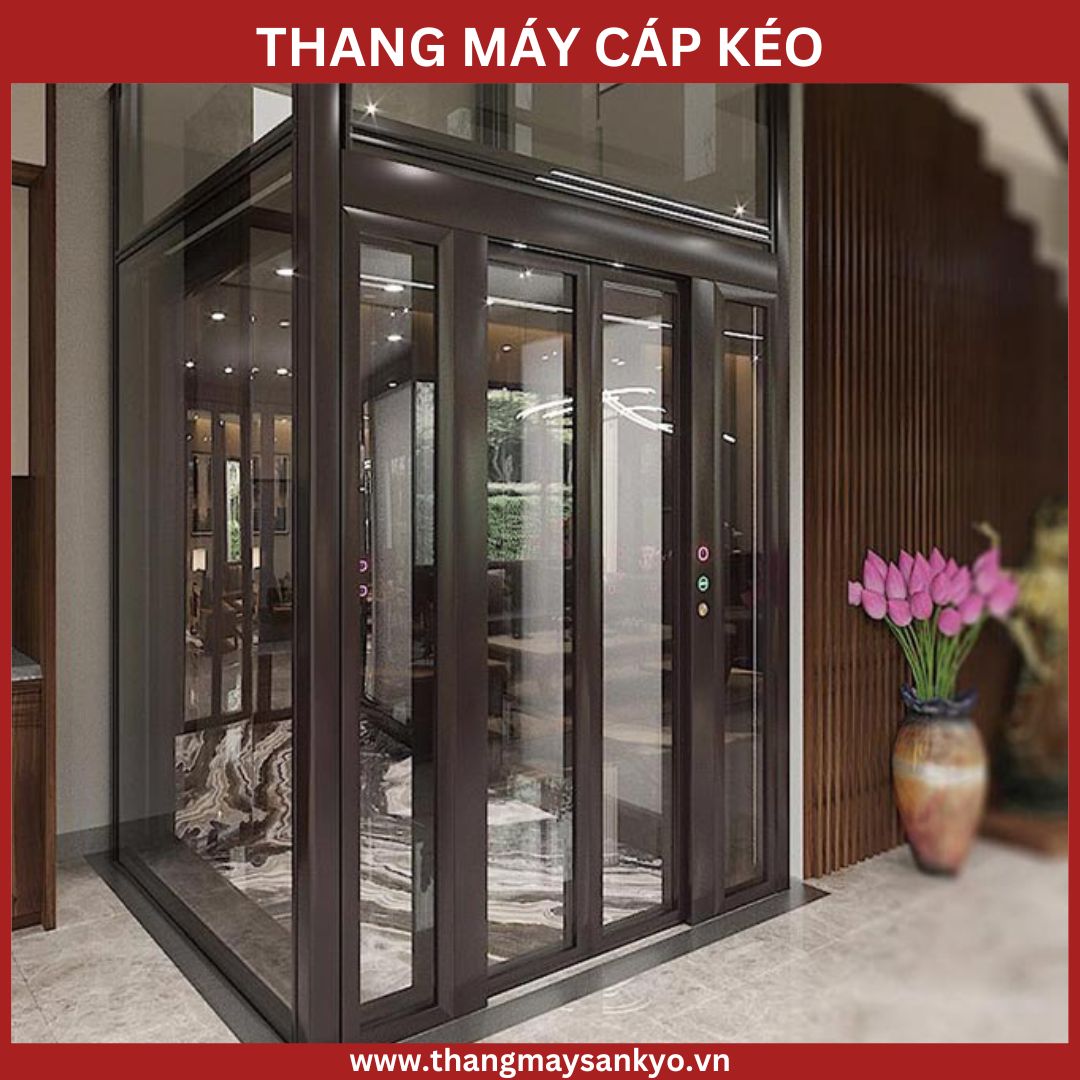
Although the traction machine is the part responsible for creating friction, in fact, the work of moving up and down the elevator depends mainly on the counterweight and the cabin. The counterweight, which plays an important role as a "companion" accompanying the cabin, is the part mainly responsible for the elevator's movement. The balance between the counterweight and the cabin is not only an important factor in ensuring safety, but also a key factor in optimizing the performance of the cable-driven elevator.
Safety warning system inthang máy gia đìnhThe traction rope is designed to automatically operate when it detects situations that require intervention, such as when the elevator has problems such as overloading or jamming the door. These safety features and protection systems not only ensure absolute safety for users but also help prevent and promptly handle problems that may occur during elevator operation. Thanks to these warnings and protection systems, the use of the traction rope home elevator becomes safer and more reliable than ever, bringing absolute peace of mind to users.
Although the operating principle of a traction elevator seems simple, to ensure the safety and efficiency of the elevator, the traction cable system must be carefully designed and operated. The quality of the traction cable plays an important role in ensuring the safety and reliability of the elevator.
The traction cables used in traction elevators are usually imported high-quality cables. This ensures that the traction cables have good durability and load-bearing capacity, helping the elevator operate stably and safely. Using high-quality traction cables also helps increase the life and minimize the risk of problems during elevator operation.
SEE MORE PRODUCTS:
Advantages of cable elevators
Cable traction elevators offer many unique advantages, including:
Safety : The cable elevator is built on the principle of natural balance, similar to the mechanism of a child's seesaw. This helps to minimize the risk of accidents and creates a safe system for the user.
Energy Saving : Due to the use of the natural balance principle, cable elevators do not require much energy to operate. This helps save operating costs and reduces environmental impact.
Easy to maintain : Because there are not many complicated parts, cable elevators are often easier to maintain and repair than other types of elevators. This helps reduce maintenance costs and prolong the life of the elevator.
SEE MORE ARTICLES
Suitable for small spaces : Cable elevators have a compact design and do not require a large elevator shaft, suitable for small spaces in cramped buildings.
Convenience and flexibility : Cable-driven elevators can be installed in a variety of locations and can be easily integrated into existing structures without requiring significant changes. This creates flexibility and convenience in the use of elevators.

Application of cable elevator
Cable traction elevators offer a wide range of flexible and diverse applications, including:
Residential use : Cable traction elevators are an ideal choice for homes with limited space. With the ability to be installed in small spaces, this elevator does not require a deep pit or high OH height, while still ensuring sufficient speed and load. This helps to improve the utility and value of the homes.
Used in new construction and renovation projects: Cable elevators are flexibly applied in both new construction projects and renovation of existing buildings. This helps optimize space and increase convenience for users.
In commercial and service areas : Not only for families, cable elevators are also suitable for commercial and service areas such as shopping malls, industrial parks, offices, and shops. This brings convenience and saves time for people traveling in these areas.
Diverse applications: Cable traction elevators are not only used in residential or commercial buildings, but can also be integrated into many different types of architecture such as apartments, villas, or tourist and entertainment areas.
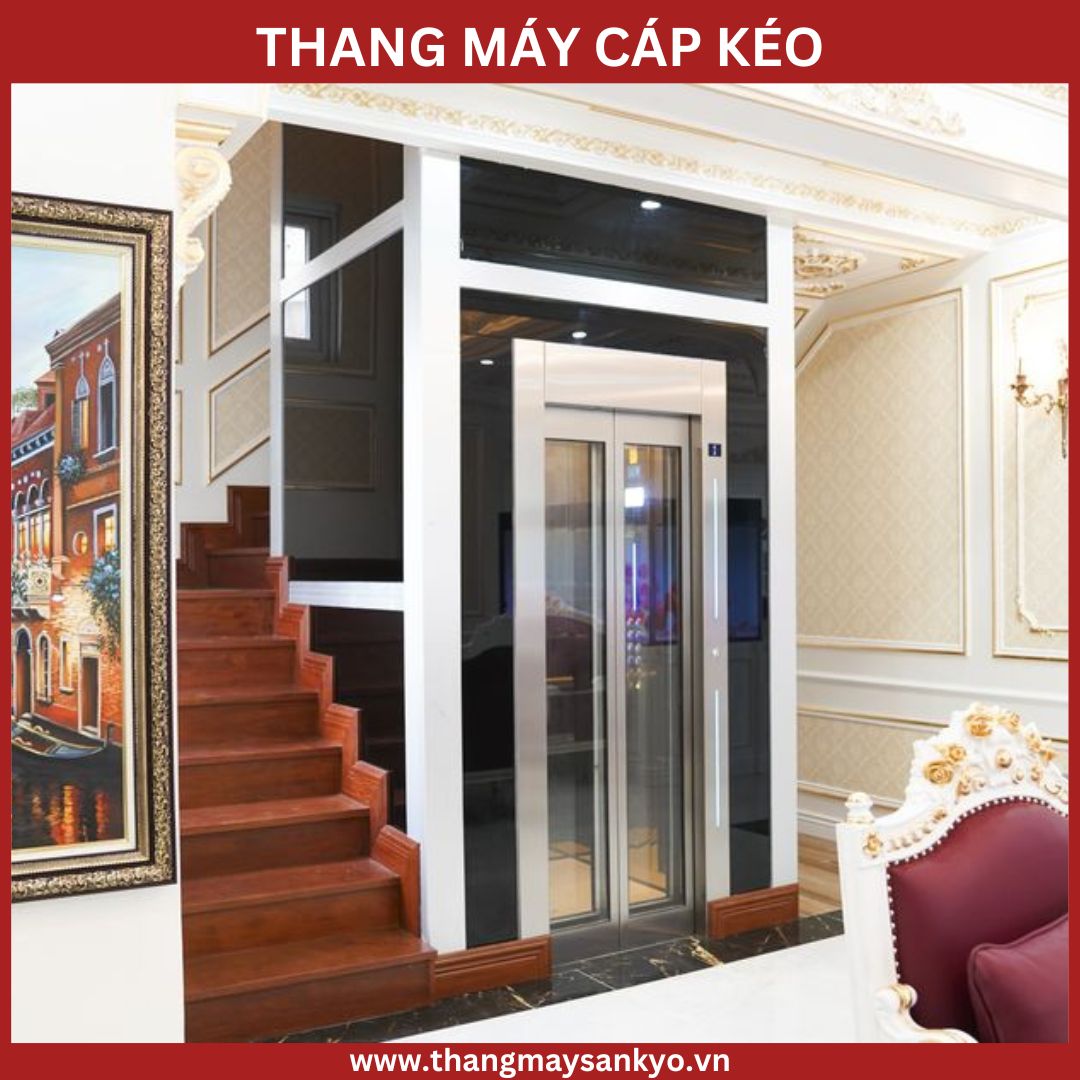
SEE MORE PRODUCTS:
Hiện chưa có đánh giá nào về sản phẩm này!





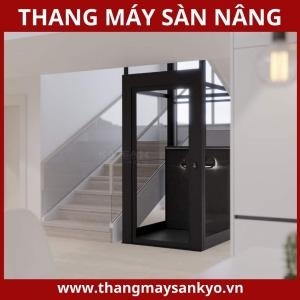

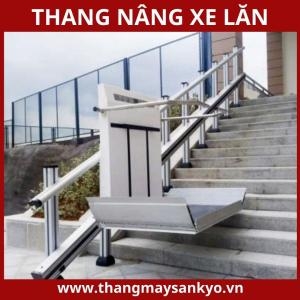

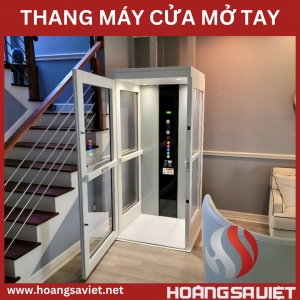
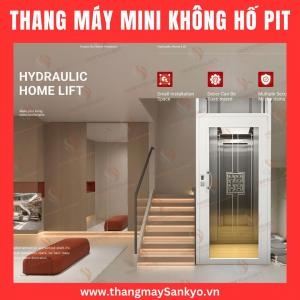
.png)
.png)

.png)

